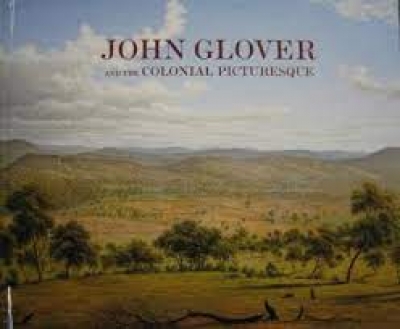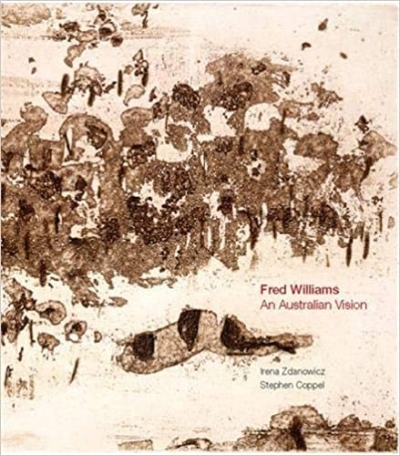Visual Arts
What should an Australian museum collect? How should permanent collections affect exhibition policy? Who should decide what to buy? These are three provocative questions raised by the current survey of English art over several centuries at the Art Gallery of South Australia, an exhibition drawn exclusively from its permanent collection.
... (read more)Rustic cubism: Anne Dangar and the art colony at Moly-Sabata by Bruce Adams
Rooms do furnish a book. This book was inspired by a 1930s interior in a photograph that art historian Bruce Adams came upon when interviewing Sydney painter Grace Crowley (1890–1979) at her home in 1973. Two years later, Adams visited the building that had intrigued him: Moly-Sabata, on the left bank of the Rhone about sixty kilometres south of Lyon. In this account of the artists who lived there from the late 1920s to early 1950s, a big-faced, stiffly dressed, middle-aged Australian makes her presence felt. In contextualising expatriate painter Anne Dangar’s twenty-one-year tenure in the art colony, Adams shows what her aspirations were, why she turned herself into a village potter, and the political use that was made of her work.
... (read more)Place Made: Australian Print Workshop edited by Roger Butler and Anne Virgo
In the long tradition of printmaking, print workshops have played a critical and often unacknowledged role in encouraging, supporting and teaching artists to become printmakers, providing facilities and technical expertise, and, above all, producing prints. It is well known that Picasso’s unconventional experimentation with print techniques was often directly inspired by his printers’ abilities, while the rise of interest in lithography in America in the mid-twentieth century was due to lithographic workshops established by printers such as Tatyana Grosman and June Wayne. Nevertheless, the printer’s part in the creation of a print is still often overlooked.
... (read more)Souvenir books are just that – souvenirs of a collection, usually bought as reminders of things seen and enjoyed. They also serve as introductions to a collection or to whet the appetite for a proposed visit. For some purchasers, they are introductions to an aspect of art that has fascinated them during a museum visit, or to collections not always on display. To succeed, souvenir books must be visually glamorous and enticing, and written in an accessible yet scholarly style.
The National Gallery of Victoria’s eight new souvenir books devoted to works from the international collections are exemplary and could serve as models to most museums. They represent a high point in the design of museum publications in Australia and celebrate the pride that the NGV has in its collections. I hope that we might soon see the Australian collections similarly celebrated.
... (read more)Yvonne Audette: Paintings and drawings by Christopher Heathcote, Bruce James, Gerard Vaughan and Kristy Grant
It’s something of a shame, I suppose, but an enduring cliché emanating from Sofia Coppola’s critically acclaimed film Lost in Translation is the term itself – used currently to describe social encounters where language really is a barrier to communication, or abused in glib dismissals of ailing relationships or fraught encounters. But this is the term that sprang to mind when I was reading this book and considering the deft ways in which each of the writers has contextualised Yvonne Audette’s art, but has not lost in their translations of her practice the lyricism and understatement in her work, and the ultimately mysterious internal impulses that have driven Audette through five decades of creative enterprise. For some viewers, Audette’s is, or could be, an uneasy art. The pleasant surprise in this book is its balance of scholarship against its evocation of the poetics and introspection of an artist’s vision and visual life.
... (read more)John McPhee put John Glover in the picture, identifying him as the foreground figure with sketchbook sharing our view of the Tamar River at Launceston. David Hansen saw that Glover marked his Hobart Town house in special colour at the centre of a distant panorama of the town, the viewpoint for which is across the Derwent in a sportive scene of indigenous Tasmanians at Kangaroo Point. For that work, the artist’s point of view (and ours) doubles with that of the Tasmanians, and the artist, looking at the neat settlement under frowning Mt Wellington, sees himself in it. I like the verbal image, which joins the painter to the scholar in viewing a work and imagines the artist as one who searches for meaning. It may not correspond with the deep perspective of art history, however, and the authors of John Glover and the Colonial Picturesque have preferred to look back with hindsight. An intriguing aspect of this gentle, though magisterial, text is what the writers saw.
... (read more)
Fred Williams: An Australian vision by Irena Zdanowicz and Stephen Coppel
Things shimmer in the distance, as idiosyncrasies of air and light press in upon the eye, causing the terrain before one to wobble, smudge and dissolve. It was the singular achievement of Fred Williams to find an original pictorial syntax to poeticise such distance as it was experienced in the Australian landscape.
... (read more)Erotic Ambiguities: The Female Nude in Art by Virginia Rigney
The privileges of artistic ambiguity have been stretched a little by the publishers in choosing such a broad subtitle for this work. So, as the author does, let’s clarify what Erotic Ambiguities is about: ‘While focusing on the female body in art, this book considers the way in which visual art produced by women was informed by feminism.’ This statement, as it turns out, is also not entirely true, as some works by male artists are discussed and the author does not limit herself to literal depictions of the human form. Furthermore, feminism is acknowledged as too loose a term and McDonald clarifies her territory by adding ‘contemporary feminism is a coalition of various conflicting feminisms that are neither co-existive nor independent’.
... (read more)The Oil Paintings of Arthur Streeton in the National Gallery of Australia by Mary Eagle
This is now the best book on one of Australia’s best – and best-loved – artists: Arthur Streeton, who worked in Melbourne, Sydney, Cairo, Canada, and London, and exhibited from 1884 to 1943. The National Gallery owns forty-six oil paintings, from 1884 to 1934, some being his best and most characteristic, others interesting oddities or minor pot-boilers. Of course, many of his most famous works are not here, but we see him whole.
... (read more)Sandra Holmes’s Yirawala: Painter of the Dreaming is not a picture book or a ‘pretty story’. It does not tell balanda (white people) what they want to hear, nor does it euphemise the truth. The book is an inspiring, if harrowing account of Yirawala’s life and death, his religion manifest as art, and his struggle with balanda officialdom to regain title to his Dreaming country, Marugulidban.
... (read more)







